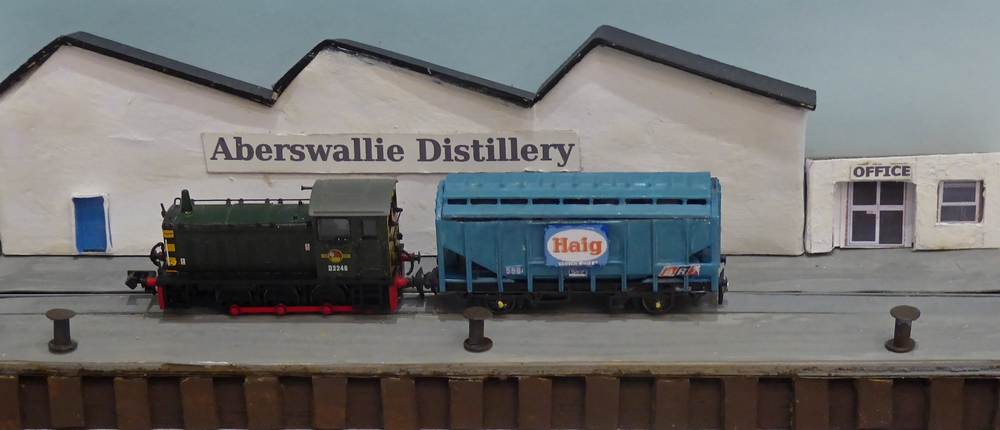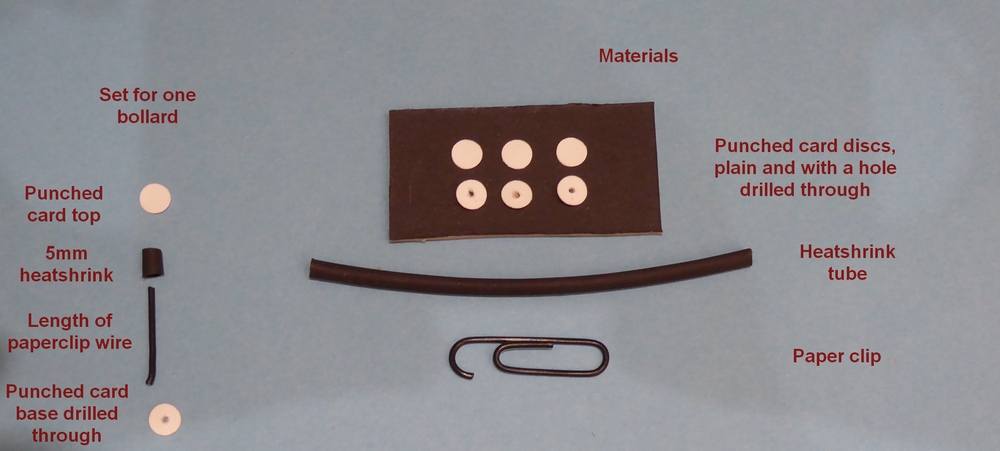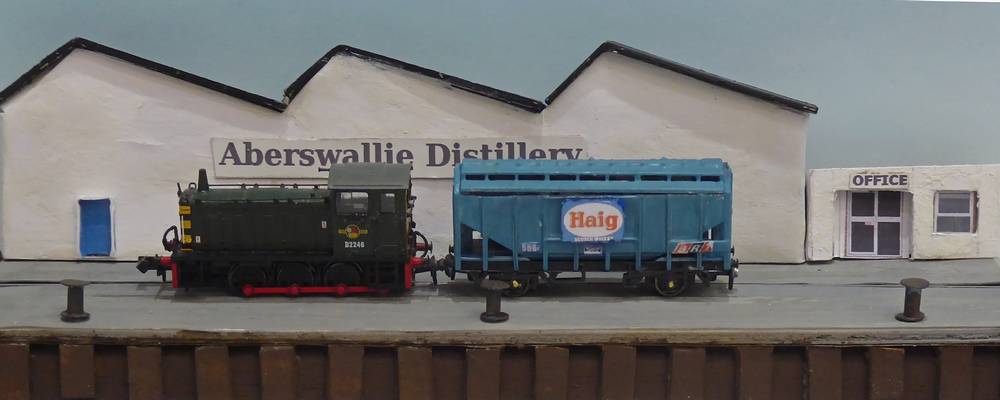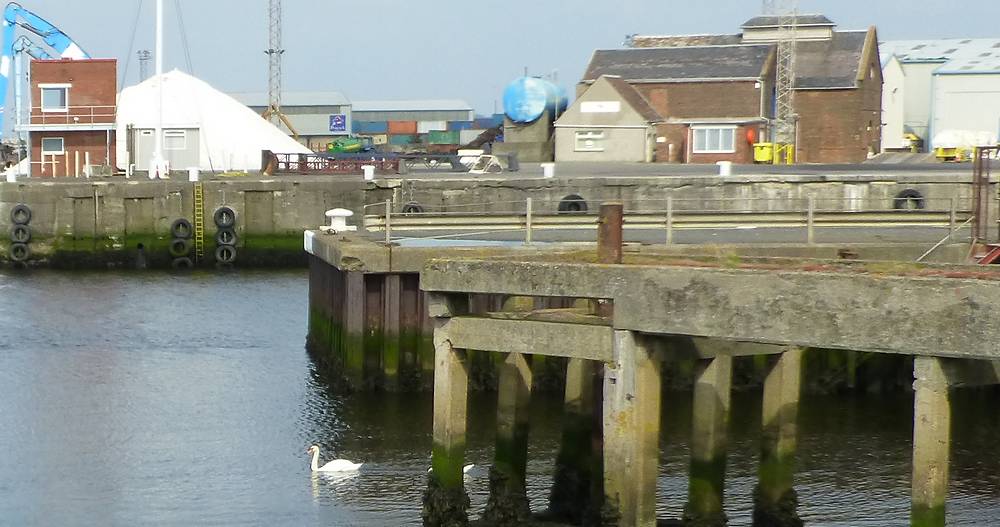Quayside mooring bollards in N scale

The first step was to try to find out what mooring bollards looked like in the 1970s and this proved more difficult than I imagined.
I grew up in Ipswich and, in my teenage years in the 50s, I used to cycle occasionally on the quayside at Ipswich docks. My memory is not that great but I remember two things about bollards - you could sit on them and they were substantial being made of cast iron. There is now an extensive collection of historical photos of Ipswich Docks [ref. 1], but very few photos show bollards and those that do are confusing.
My design of model bollard then is basically guesswork. If you can sit on a bollard, I assumed a height of about 2.5 feet (5mm in N scale). I also used 5 mm for the top and bottom of the bollard.
This technique is based on the method I used for coach and DMU buffers [ref.2]
(After I completed making these bollards, I did find more information about bollards which is discussed at the end of the article.)
Construction

This photo shows, on the right-hand side, the materials used in the construction and, on the left, a set of components for a single bollard.
The top and bottom of the bollard are 5mm card discs punched out with an office hole punch. I used the thickest card (about 200 gsm) which would go into the punch. The lower card disc needs a 1 mm hole drilled through.
I used heatshrink tubing for the central section, but any tube of suitable diameter would do (e.g. ball point pen ink tube)
Wire from a paper clip gives the central support and gives a spigot for fixing. Do not cut to size yet. Leave it long enough to give something to hold when painting; it will be cut to size just before fixing.
The top, a plain disc was glued to the wire with superglue. Five mm of the heatshrink tubing was cut for the central section and superglued over the wire onto the top. The wire was then pushed through the drilled disc which was then superglued in place. At each stage, I waited for the glue to set.

Painting

The bollards were first sprayed with Wilco grey primer. The next day the bollards were brush painted with Revell Matt Anthracite Grey. Finally, they were given a rusty appearance by dry-brushing with Revell Matt Leather Brown.
Fixing
The position of the bollards was marked on a paper overlay and this overlay taped in position on the quayside surface. 1mm holes were drilled at the locations and the paper overlay removed.
A 1mm hole was also drilled in a scrap piece of 3mm foamboard to act as a jig to help cut the spigots on the bollards with a wire cutter to the same length. The bollards could now be pushed into the quayside surface.

Comments
I was pleased with the method as it is relatively straightforward; perhaps there could be an even simpler method using nails/panel pins and a piece of tube.
What I am not sure of is this the right shape and size for a bollard. Ironically, after this work was finished and the article was nearly finished, by chance I came across a photograph of Ayr Harbour that I had taken from the end of the Esplanade in August 2015. This shows a row of bollards on the far quayside and a single bollard on the central quayside. All are painted white. I suspect that these bollards are not in regular use, as ropes chafing on the surface would soon remove the paint. I have found other photos on the internet showing bollards at Ayr which are in the more expected rusted cast iron colour that I depicted in my models. There would seem to a difference in shape with the top being lopsided and not symmetrical. I surmise that over the UK there will be a number of different designs of bollard.
Lastly, further research on the internet has shown what kinds of bollards you can buy today. Fendercare Marine Products produce 4 types of bollards [ref 3]. Three of them are quite complex shapes which would be difficult to model except perhaps by 3D printing. The fourth, a pillar bollard, is nearest to the type I produced but would need a larger base - wider and thicker.

Entrance to Ayr Harbour in August 2015

